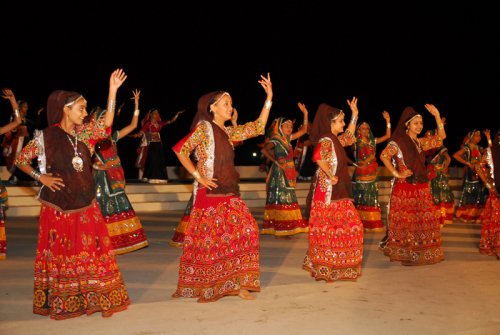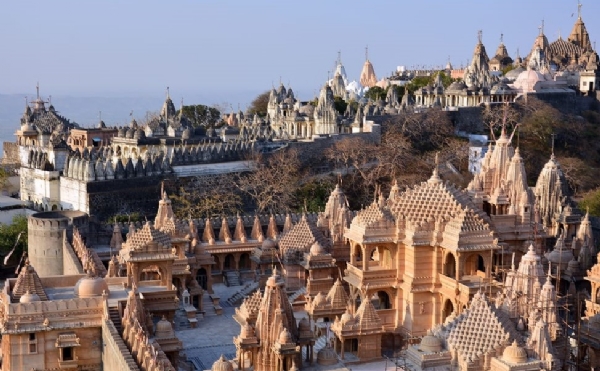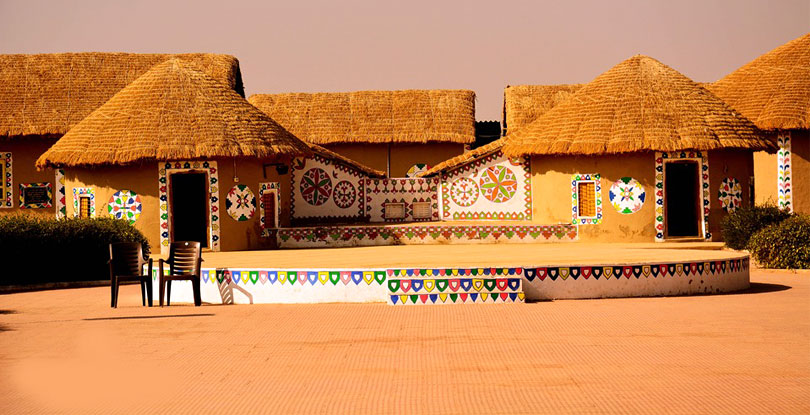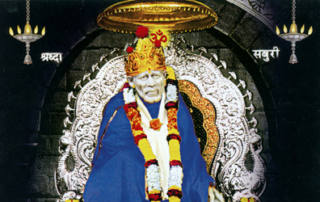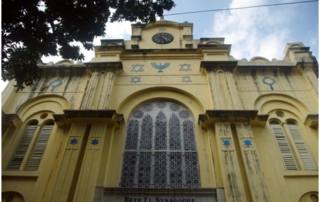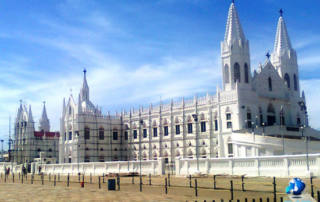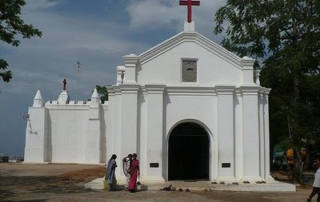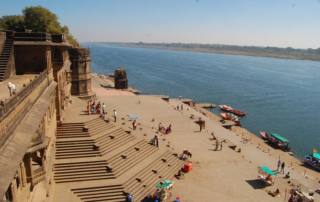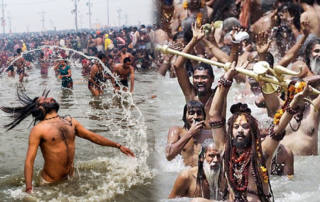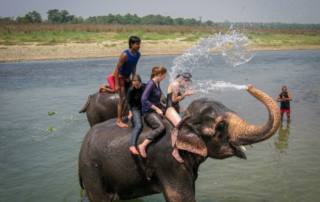14 DAYS/13 NIGHTS
Want to Know More About The Tour?
ABOUT
Gujarat in West India is a state rich in art & culture, home to many tribes the westernmost tip of India bordering Pakistan has many tribes who till date live in centuries-old traditions, furthering the tour will drive us through some of the Wildlife habitats of the area proceeding into Rajasthan visiting cities of Udaipur, Jaipur, Agra before ending up in Delhi
Pre-departure planning is important. Here are certain things you should watch for and plan for.
Visas
Check with the Indian consulate or embassy in your country to find out if you will need a visa to visit the country of your destination, especially for an extended period of time. Some countries have extremely detailed and complicated entry/departure laws and treat visits of a week or two very differently from longer stays.
Money
If you’re traveling to one area, check the cost of living there. If it’s high you’ll probably want to budget more carefully and save some money before leaving. The lower the cost of living the less you’ll have to save, but be sure to have a backup reserve in emergency cases.
General Tips
Talk to other people who have done a similar trip.
If you don’t know anyone personally, try any of the dozens of online travel websites full of first-person travel stories covering every possible type of trip.
Plan big and loose. Read everything you can about the area.
There may be sights and attractions you didn’t know about. A rough outline of your trip might have three or four target points and a variety of ways to get between them.
You don’t want to find out that the weather isn’t what you thought, or the guide book was incorrect, after committing to 6 weeks in a specific spot.
Some trips will allow you more leeway than others. Travel plans in Asia can often be made day-by-day while summer travel in Europe should be organized at least a few weeks ahead unless you’re prepared to hunt around for hotel rooms and train seats.
Set up a pre-trip timeline so you don’t end up with a full to-do list during your last week of work or school.
Things to consider are doctor’s visits for a check-up, inoculations, and prescription refills; purchasing plane tickets; renewing passports and obtaining visas and other documents.
Check your insurance coverage abroad and purchasing additional travel insurance if needed. Don’t forget visiting friends and family members!e
The longer the trip, the lighter you should pack. This might seem strange, but it’s true you can afford to lug a heavy bag around for a week or two, but do you want to have anything extra for a year?
Stick to the absolute basics and know what you can and cannot buy at your destination(s). There’s no point in bringing 6 months of toothpaste to Europe or buying a sarong at home to take to the tropics. If you are visiting several climates, try to arrange it so you visit the warmer places first and the coldest last. That way you can purchase sweaters and long pants and not have to carry them any more than needed. Alternately, visit cold climates first and then ship unneeded layers home — or sell them off.
A good rule of thumb is to bring one outfit for the hottest day you’re likely to encounter, one for an average day, and one for the coldest.
Make sure everything goes with everything else (if that’s important to you), and remember that layers are always best.
Be prepared for uncomfortable trips. You will often find yourself in a busy, cramped, economy class environment and it could be for many hours – especially long plane trips.
If you want to arrive at your destination refreshed and able to enjoy the sights, then try a good quality travel pillow to support your head, some earplugs to block out the screaming babies, and an eye cover to block out the sun or cabin lights.
Just avoid those cheap U-shaped pillows from airport shops – your head drops forward and you wake up with a stiff neck.
Make contact with the locals before you go.
Maybe you have a friend-of-a-friend or a foreign exchange student from high school you remember, or just found a friend through a travel website; almost everyone is happy to welcome a foreign visitor to their hometown. This might be as elaborate as a home stay for a few weeks, or just coffee in their hometown or dinner at a local restaurant.
Getting Around
Make your own way or if there are too many great things to see, follow the lead of a guided tour.
A perfect city for exploring on foot with a shop around every corner. Much of the inner city can be walked without trouble, however, in parts walking includes crowds, uneven streets, heavy traffic, and skinny sidewalks. If that’s a problem, there are plenty of taxis to ride in and scooters to rent.
How to Travel
- Subway – The metro is the fastest transportation. Running 5 am to 10 pm every day in all the major cities of India.
- Bus & Train – Operated by an independent organization, busses and trains include wifi access for the public. You can take any bus or train marked with the (B Public) sign for free.
- Taxi – Available in all parts of the city. From a restaurant or hotel you can have them call the city taxi service.
- Car – Rental cars are easy to get and hotels have good parking prices. Once in the main city, you can often walk so we suggest returning the when you arrive.
- Bike – The best way to get around, other than walking, is by bike. If you don’t mind hills, you can bike anywhere. If that’s not for you, stick to the inner city with your bike.
Mini Trips
Just a few miles away you can explore the history and legacy, drink wine and relax. You can wander the hills or be lulled by the fountains. If you have time, the attractions can fill 3 days. We’ve highlighted the best ones here.
Tours
Because of the number of sights to see, some first-time visitors should start with an organized tour. Some things can be covered in depth, other are just useful for getting your bearings.
The leading tour operators use local historians to lead their tours. Guides offer walking tours, including visits to monuments, museums, and historic locations, as well as eating tours. Tour prices can be high, but most participants consider them a trip highlight. In addition, there are many family related tours, sights and more appealing activites to children.
Walking tours, like the 3 hour ghost tour, is an exclusive in the early evening. A bus excursion ruins special tours like you’ve never seen. Also worth consideration, a group of art historians and architects do a theatrical retelling from dramatic scripts. Go on a tour, expect guides to break out into a rendition of “Singing in the Rain”, it’s a lot of fun.
- Visit to Wild ass sancutary
- Tribal villages
- Boat ride Udaipur
- Elephant ride Jaipur
- Rickshaw Ride Delhi
T ravel Resources
Travel planning is about more than just knowing where you’re going. Prepares to navigate, take control and be ready for anything. This section helps you steer clear of disaster and stay open enjoy the unexpected.
Quick Tips
- Banks – Open Monday to Friday 9am to 2pm. Some banks are closed for lunch.
- Emergencies – For police, dial a local phone number; for ambulance call a hospital.
- Internet Access – Wifi is standard in most hotels and free in many coffee shops.
- Mail – Buy stamps at the Post Office. Convenient post offices are located all cities. Most are open Monday to Friday 9am to 3pm.
- Safety – Pickpocketing can be a common problem. It is suggested for men to keep wallets in their front pocket. Purse snatching also occurs at times.
Visitor Information
This site contains information with a very personal and friendly structure. It also has great links to other related sites online.
Information, internet access, maps, and train passes are available at local Tourist Information terminals. These are located at various sites around the city. Expect a wait if you arrive late in the afternoon or during lunch time. Local travel agencies are also helpful for quick information and finding hotels. There is no service charge for these services. Hours are Monday to Friday 9am to 5pm, and Saturday 10am to 2pm.
Transportation
Getting in from the airport and other arrival locations. Travel planning is about more than just knowing where you’re going. Prepares to navigate, take control and be ready for anything. This section helps you steer clear of disaster and stay open enjoy the unexpected.
- Plane – Flights arrive at the main airport near city center. If flying from European cities, you might land at a connecting airport. There is a tourist information office at the Terminal E, international arrivals, open 8am to 6pm.
- Train – A train station is on the lower level of the airport. To get into the city, follow the marked signs.
- Taxi – From the airport there is a flat-rate for the 1-hour trip, depending on traffic. Hotels charge up to $80 for shuttle service.
- Train & Bus – Trains and buses arrive a city center. This is the transportation hub for the city and is surrounded hotels.
A perfect place for exploring on foot, with local shops around every corner. You will eventually walk somewhere, it’s just going to happen. If you don’t like crowds, uneven cobblestones, heavy traffic or narrow sidewalks, take a taxi or rent a scooter.
Day 01: Mumbai
Met at the airport on arrival in Mumbai and transfer to your Hotel. Afternoon half-day city tour of Mumbai visiting The Gateway to India, The Hanging Gardens on Malabar Hills, the Dhobi Ghat, and the Prince of Wales Museum.
Day 02: Mumbai – Bhavnagar (By Air )
Morning transfer to the airport to fly to Bhavnagar. On arrival, transfer to the Hotel. Late morning visits the Palitana, 51 km southwest of Bhavnagar. A Jain pilgrim center located at the foot of the 600 mtrs Shetrunjaya hills. It has 863 Jain temples built over 900 years, many of them of marble. Surprisingly, a Muslim shrine is also located next to one of the major temples.
Day 03: Bhavnagar – Gondal
After breakfast, a (05 hours) drive brings us to Gondal. Check in to the Riverside Palace Hotel.
Day 04: Gondal – Bhuj
Morning depart for Bhuj, a 06 hours drive. Check in to the Hotel. This beautiful old walled city leaps out from the pages of the Arabian Nights. You can lose yourself for hours in a maze of narrow streets and colorful bazaars or admire the Kutchi people dressed in their heavily embroidered traditional costumes. Afternoon, visit the richly decorated Swaminarayan Temple – which has been widely featured in several travel magazines around the world. Later in the afternoon visit the Bhuj bazaar and witness a tie and dye demonstration.
Day 05: Bhuj
Morning we will visit different Banni Tribal Villages. The dwellings are made of round mud huts called ‘bhungas’ with a single central support pole and a thatched or tiled roof, all surrounding a large community courtyard. The women tend to be shy with male visitors, but are hospitable and will welcome you into their homes.
They have exquisite personal collections of embroidered quilts and garments. Walls, shelves, grain containers, and cupboards are fashioned in the mud with decorative designs washed with lime paste and embedded with mirrors that throwback hundreds of shimmering reflections. You will also see a variety of handicrafts, including textiles like tie and dye, vegetable color dye printing, `Rogan’ art, glass beadwork, woolen shawls, leather articles, and more.
We will also drive to Sumarsar village, famous for Scoof Embroidery done by the Harijan Community. Nirona Village has `Rogan’ art & bell made by the Muslim Community. Lace is also produced by the Harijan Community. Later, drive on to Mundra Village, to see the making of sheep wool, including wax printing. Evening at leisure.
Day 06: Bhuj – Bhujodi – Zainabad
Morning visit to the nomadic Rabari embroiders and weavers of woolen blankets in Bhujodi Village. Later drive for 7 hours to Zainabad. On arrival check into a unique ethnic camp, the Desert Coursers Camp Zainabad – with huts built like that of the colorful tribal villages in this area.
This western part of Gujarat state has unique barren salt flats known as the Rann of Kutch. During the monsoons, this area is flooded with seawater and once this water recedes, this vast land is covered with salt as far as the eye can see. In the winter months (November to February), this area forms a good breeding ground for flamingoes and pelicans. The famous Indian Wild Ass live here in abundance and the isolation from the outside world has helped the local Kutchhi people preserve their customs and traditions more than any other part of the state.
Day 07: Zainabad
Morning full-day excursion, traveling deep into the Rann of Kutch, observing the local Kutchhi tribes and wildlife which includes a thriving population of Wild Asses, Indian foxes, jackals, and birds like the houbara bustard, sandgrouse, quails, eagles, and falcons just to name a few. Desert Coursers.
Day 08: Zainabad – Chitra Vichitra – Mt. Abu
After breakfast, a drive of about 200 km (4 hours brings us to Chitra Vichitra Fair. We halt here for a couple of hours and proceed for Mt Abu ( 50 km – 2 hrs). En route, we will also visit the Poshina Tribal area and see ‘Patola Weaving’ in the Patan area. Patola is coloured silk thread weaving in double Ikat i.e. for fabric where the warp and weft threads are woven into intricate multi-colored designs. In Mt. Abu, Check in to the Cama Rajputana Resort.
Chitra Vichitra Fair: This fair takes place in the village of Gunbhakhari in Sabarkantha district, very near the borders of Rajasthan. It is held a fortnight after the Holi festival. The fair site is attractive, as the temple, which is its focus, overlooks the river Sabarmati, Akul, and Vyakul. It is one of the largest purely Adivasi fairs of the border region and attracts large numbers of Bhils who come from all the surrounding districts using every imaginable form of transport.
Day 09 : Mt. Abu – Ranakpur – Udaipur
After breakfast visits the beautiful Dilwara temples of Mt. Abu and drive on to Ranakpur, the fabulous 500-year-old Jain Temples. The temples are superbly preserved in near-perfect conditions. The most distinctive feature is the 29 halls of the main temple, some octagonal and many more than one story high, each dissected by 1444 pillars, each sculpted with unique designs, of which no two are exactly alike. The carvings are on the walls, while musicians and dancers have been modeled out of brackets between the pillars and the ceiling.
After the sightseeing of Ranakpur drive to Udaipur. This lake city is perhaps the most romantic of all the Indian centers. A fairytale collection of exotic gardens, mirror-calm lakes, and fantasy island palaces. In Udaipur, check in to the Hotel. Late afternoon, we have a boat ride around the fabulous Lake Pichola, which will include a visit to another island palace called the Jagmandir.
Day 10: Udaipur – Jaipur ( By Surface )
After breakfast, followed by a half-day city tour of Udaipur includes the City Palace, Saheliyon-ki-Bari (Garden where women of the royal household would meet), and the Jagdish Temple (Built-in 1651 AD by Maharana Jagat Singh, this Indo-Aryan temple is the most beautiful temple of Udaipur). Evening transfer to the airport to fly to Jaipur, the beautiful pink city almost totally built-in shimmering pink sandstone, you will be met and transferred to the Hotel.
Day 11: Jaipur
Morning photo-stop at the honey-comb designed Hawa Mahal also known as the ” Palace of Wind ” from where the royal ladies, who lived in seclusion, observed life on the outside. Later visit the fairytale-like, Amer Fort, as you ascend the hill like a Maharaja on the back of an Elephant. This is followed by visits to the City Palace of the Jaipur Maharaja and the amazingly accurate Jantar Mantar, the medieval stone Observatory. Afternoon, visit a hand-knotted carpet weaving unit – where wool is colored in vegetable dyes, making each carpet only one of a kind. We will also see a hand block printing on cotton fabric demonstration.
Day 12: Jaipur – Fatehpur Sikri – Agra
After breakfast, a 06-hour drive through the vast farmlands of Uttar Pradesh State. En route, we will visit the Ghost Capital of the Mughal Emperor Akbar Fatehpur Sikri, built entirely of red sandstone and now declared a World Heritage Monument. In Agra, Check in to the Hotel. Afternoon visit the fabulous Taj Mahal: A symbol of eternal love and one of the “Wonder of the World” and the Agra Fort, standing testimony in red sandstone to the story of the Great Mughals.
Day 13: Agra – Sikandra – Delhi
Morning depart for Delhi. En route visit Sikandra, 10 km from Agra, to see the Mausoleum of the Mughal Emperor Akbar. This building has excellent Muslim architecture, which is very visible in subsequent Mughal buildings, including the Taj Mahal. In Delhi, Check in to the hotel. Later drive down one of the largest bazaars of Delhi, Lajpat Nagar with its assortment of shops, or to the Hauz Khas Village with its lineup of fashionable boutiques.
Day 14: Delhi Departure
After breakfast full day city tour of Old & New Delhi which includes Raj Ghat (Mahatma Gandhi’s Memorial), the Jama Masjid (Universal Mosque), the Red Fort, and to fabled Chandni Chowk (Silver Street) covering the spice market, Gold / Silversmith market on rickshaws (tri-cycles) through the bylanes. Afternoon city tour of New Delhi which includes the Qutab Minar, Emperor Humayun’s Tomb, the Houses of Parliament, and the Presidential Palace. Also visit the National Museum, having a good collection of Indian bronze stone & wood sculptures dating back to the (2 nd and 3rd Century BC). This museum also has a fine collection of tribal costumes. This evening enjoys a Farewell Dinner hosted.
RELATED TOURS:

